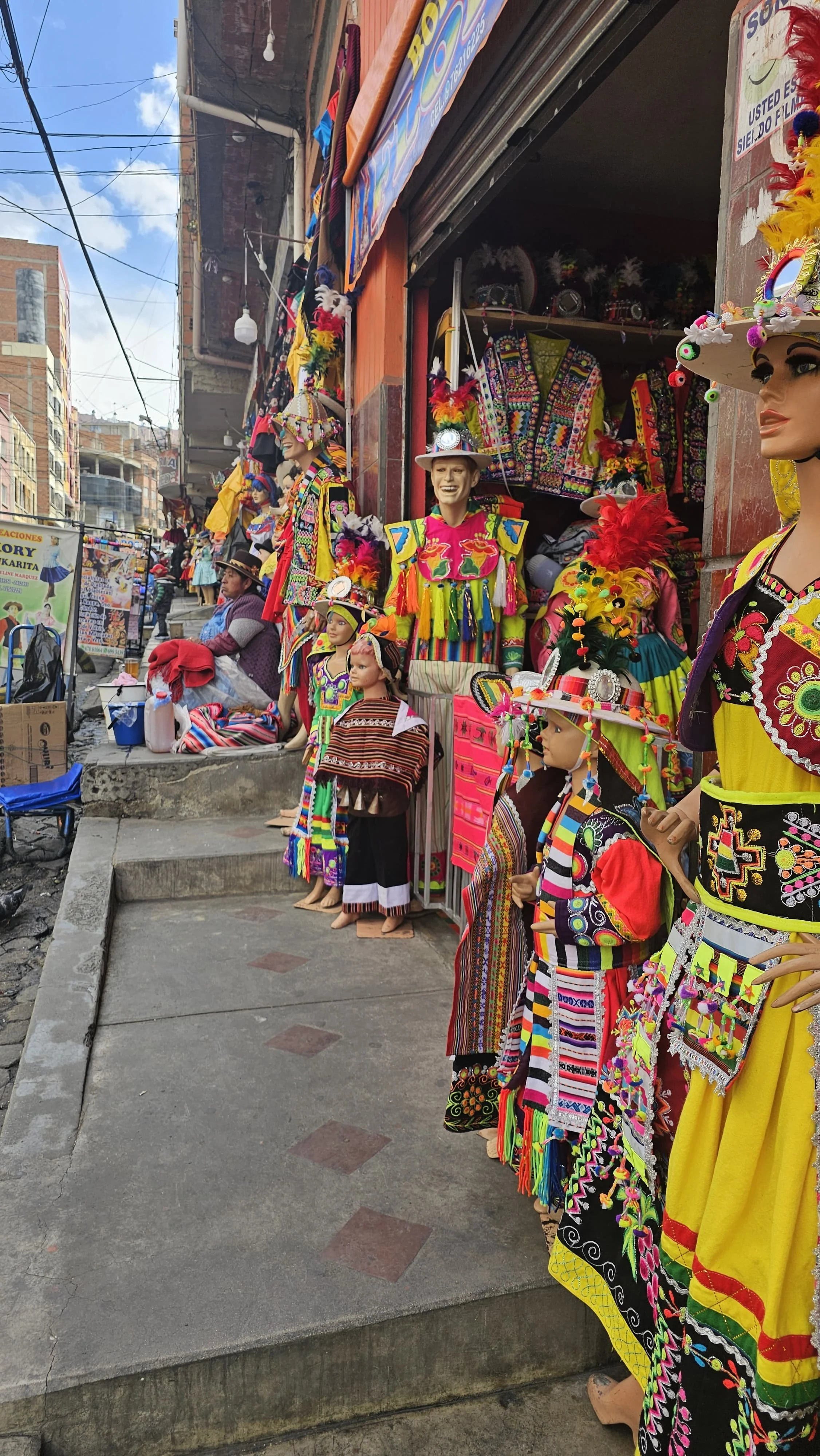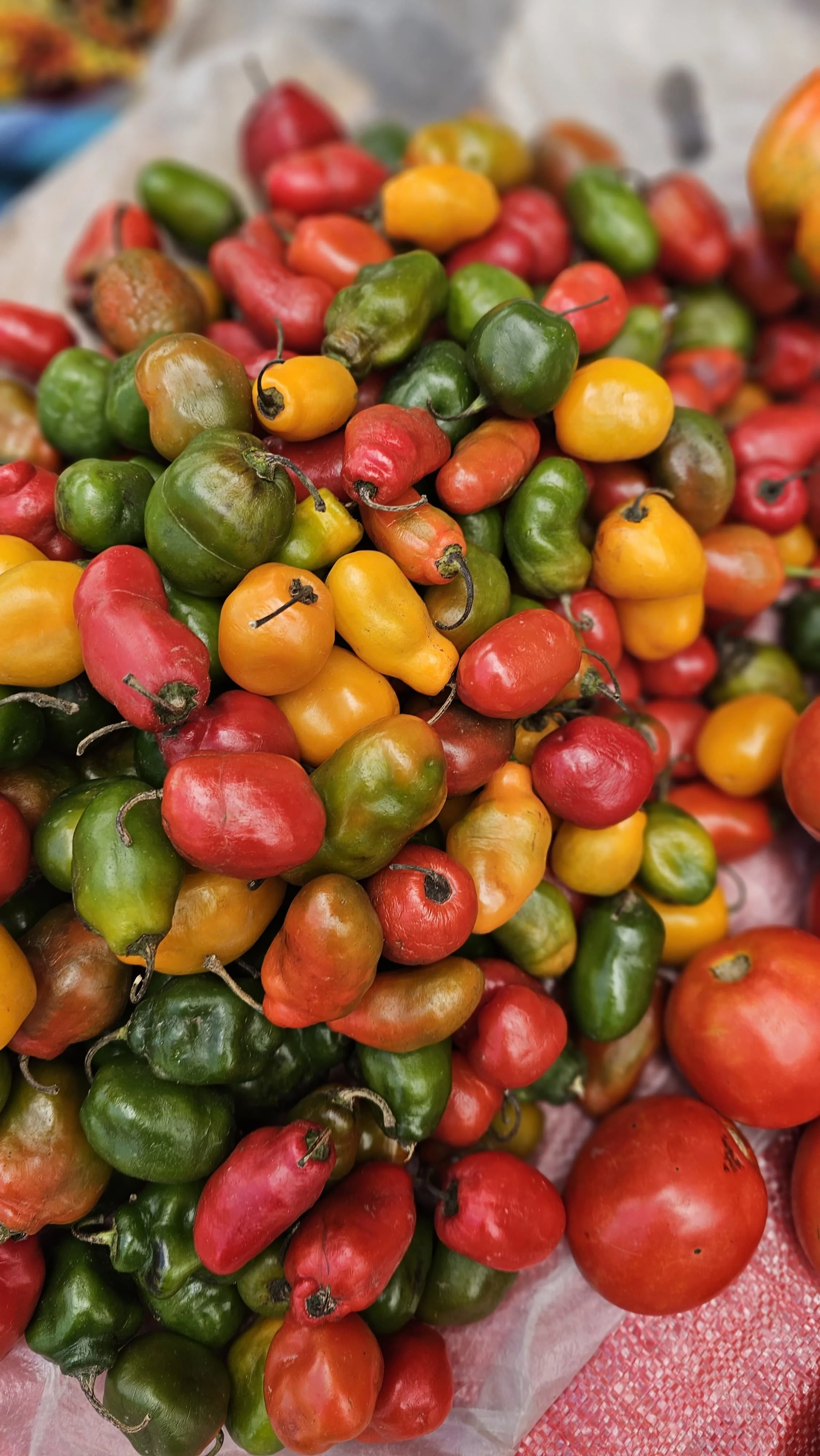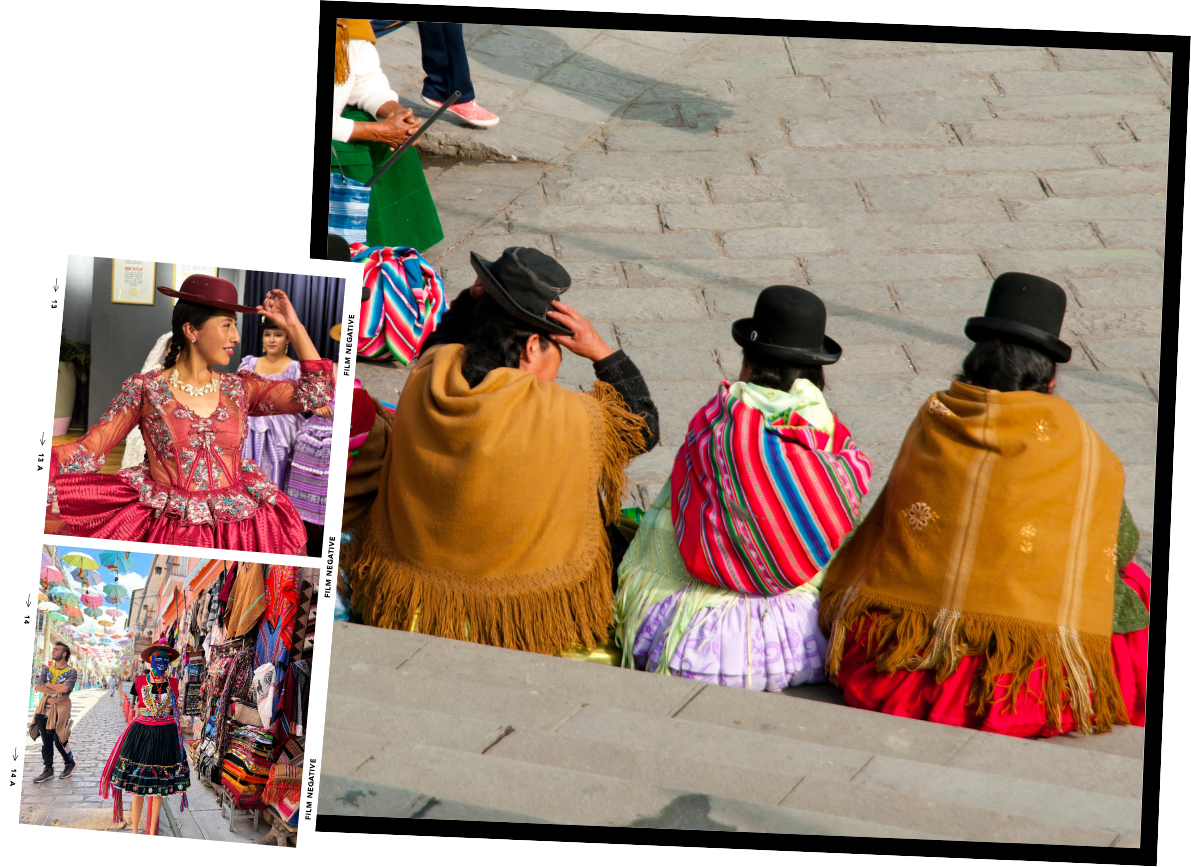
Colors of La Paz
Discover the Meaning, the Markets, and the Murals
november 2025
Hi, and great to have you back here in the city of La Paz!
Today we’re talking about colors, the amazing colors of this city, the meaning behind them, and where you can find some really cool, colorful Instagram moments. When you first arrive in La Paz, a lot of people say it doesn’t feel like a very colorful city,and they’re right in some ways. Up here at 3,600 meters there isn’t much green, especially in winter, and compared to Coroico, just two hours away and right on the edge of the jungle, it can feel a bit dry.
But look a little closer, and La Paz is full of color. You’ll see it in the rainbow of markets, from purple corn to yellow potatoes. You’ll find it in the murals splashed across walls and staircases, turning entire neighborhoods into open-air galleries. And you’ll notice it in the clothes of the cholitas, in their bright skirts and shawls that bring color to every street.
A last glimpse of Bolivia’s most fascinating week
Before we continue with The Colors, here’s a small La Paz update. These past weeks have been full of magic in every way, Halloween, All Saints’ Day, and tomorrow, 8th of November, we’ll close this special time with the celebration of Las Ñatitas. We’ve written and talked about it in earlier blog posts here, and if you’re in the city, join our tour tomorrow to see how the cemetery of La Paz fills up with beautifully decorated human skulls to honor their day.
You can totally explore these tours on your own, but going with someone who really understands the traditions makes the experience so much richer. Especially when it’s something new or different from what you’re used to.
Want to know more? Just send us a message here 🤎
Clothes, Cloth & the Wiphala
Color isn’t just something nice to look at here, it carries meaning. The aguayo, the woven cloth you see on so many people’s backs, is more than a practical way to carry babies or groceries. Its patterns often represent mountains, sky, and family traditions, with every color carefully chosen.
You see the same symbolism in the wiphala flag, where each color has a message:
Green for the land and its fertility
Yellow for energy and strength
Red for the earth and the people’s history
Blue for the sky
White for time and harmony
Orange for culture and society
Purple for government and authority
Together they tell the story of balance, between people, nature, and the spiritual world. And once you notice these colors, you’ll start to see them everywhere in the city.
Markets – A Living Rainbow
Walking into Rodríguez Market is like stepping straight into the core of the city. Each section has its own purpose: streets lined with flowers, alleys full of fruits and vegetables, and just a few blocks away, the witches’ market with herbs, powders, and charms. The colors are everywhere, purple maíz, red tomatoes, yellow maracuyás, green herbs, and potatoes in every shade from white to deep blue.
This is where daily life happens. People come to shop for the week, carrying everything in their aguayos tied on their backs, no strollers or shopping carts needed. Sellers arrange their goods in neat piles, making the stalls look like open-air art installations: orange carrots stacked into pyramids, baskets of pink oca, and rows of red bananas.
Five colorful things you might spot for the first time:
Purple maíz – used for making the sweet drink api
Dark pink oca – a root vegetable with a slightly tangy taste
Tiny red ají peppers – no bigger than your fingernail but very spicy
Red bananas – sweeter and softer than the yellow ones you know
Dragon fruit – its pink skin and white speckled inside look almost unreal
Bonus: If you come in the right season, you might even find yellow watermelon, a surprise for anyone seeing it for the first time.
Street Art & Insta Moments – The City as a Gallery
Street art has become part of everyday life in La Paz. Over the last few years, entire neighborhoods have been painted, and community projects have turned blank walls into spaces full of color and meaning. Walking through the city, you’ll see how street art mixes with the markets, the traffic, and the daily rhythm of La Paz, it’s everywhere if you pay attention.
Five of the best spots for cool street art photos:
Chualluma – a whole hillside of painted houses and colorful stairs with amazing views
Calle de la Felicidad, Sopocachi – a narrow street packed with murals and creative art
Sagárnaga Market Area – street art mixed in with market stalls and travelers passing by
Cementerio General – large murals on the outside walls that tell stories of the city
Umbrella Street – a fun, colorful spot where hundreds of umbrellas hang overhead, perfect for Instagram photos
Reflections, Tips & Invitations
Bolivia’s most magical week isn’t about big shows or staged events. It’s a mix of celebrations that locals live fully, and travelers are welcome to be part of if they come with curiosity and respect. Halloween brings the fun and creativity, All Saints’ Day opens a window into family traditions, and the Day of the Ñatitas shows a side of Bolivia that few expect.
If you want to join in, here are a few simple tips:
Dress warmly — evenings can get cold, especially during night walks.
Walk slowly — a lot of the beauty is in the small details.
Ask before taking photos — especially around altars and skulls.
Learn a few words - like caserita, yapita, and gracias — it goes a long way.
Keep an open mind — some traditions might surprise you, but they are real parts of people’s lives.
Mamani Mamani: One of the most famous artists whose murals celebrate Andean culture and traditions. His work includes the brightly painted houses you can see when flying over El Alto, and you can also visit his gallery in Calle Jaén to see more of his art up close.
Tip: Download our freebie map, visit these places, and snap your favorite photos. Turn it into a challenge, tag us when you post them and stop by Café del Mundo for a cappuccino as a reward. HERE
Traditions, Masks & Dance – Colors in Motion
La Paz is not just colorful on the walls, it moves, dances, and sings. The city’s parades and fiestas are full of costumes, masks, and traditions that go back hundreds of years.
If you arrive before a big carnival, festival, or dance event, take a stroll down Calle Los Andes, where many of the costumes are made. You’ll see people sewing, fitting, and moving around with giant hats and sparkling fabrics, creating a street full of color and energy. It’s like stepping behind the scenes of one of the biggest shows in the city.
Where every color tells a story
So that’s our walk through the colors of La Paz, from the meaning of the wiphala flag to the markets, street art, and even the costumes waiting for the next big festival. If you want to go deeper, check out our Inspiration Station for more stories, tips, and ideas on where to find the city’s colors for yourself.
And if you enjoyed this post, make sure to subscribe so you don’t miss the next one. You will also get our free e-book about traveling to La Paz and Bolivia, perfect for planning your trip and finding more inspiration. Any questions, just reach out!
















